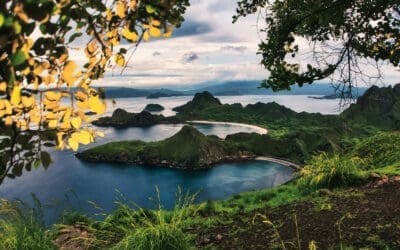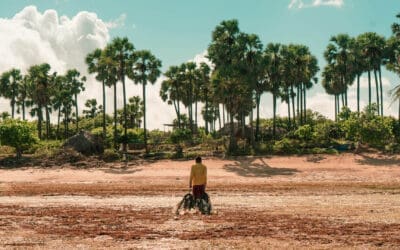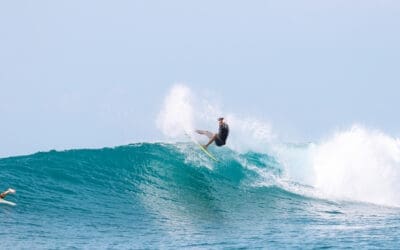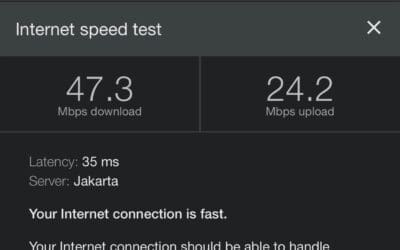For most of us, the best time for your trip to Rote depends on 3 main factors. The weather, surf conditions, and whether you want to be here in the busier peak season, or the quieter low season.
Peak season can mean offshore trades everyday at T-Land, but with a more crowded lineup and peak season fees at resorts and accommodation. Low season on the other hand, might have less waves guaranteed and some rain, but you can save some money, experience a lush green Rote Island and score a lineup to yourself.
Like most of Indonesia, Rote’s climate is defined by two main seasons, the dry and the wet seasons.
This guide will give you helpful information about the seasons, and the effect they have on the island,hopefully helping you choose the ideal time for your trip.
Rote’s Climate at a Glance:
Rote Island is the most southeastern of the small Sunda islands, located at almost 11 degrees south latitude, near the island of Timor.
It’s Tropical All Year
While there is a wet and a dry season, year-round warmth defines Rote’s climate, with highs consistently reaching the high 20s°C (low 80s°F). While temperatures stay warm year-round, slight variations occur. July, August are the coolest months, while September to November sees the hottest days.
It Is Dry Compared To Other Indonesian Islands
Rote is classed as a Tropical Savanna Climate. Meaning among other things, it’s a long dry season and a short wet season.
When It Rains, It Pours
Rote receives 80% to 95% of its annual rainfall in the short wet season, meaning most of its 1,200 to 1,300 mm annual rainfall happens within just a few months, and often mostly together.
The Seasons
Dry Season runs from April to November. Wet Season, December to March.
Rote Occasionally Gets Tropical Cyclones
While rare, they can happen during the wet season. The last one in 2021 which brought major flooding and landslides to portions of southern Indonesia and East Timor and later went on to make landfall in Western Australia’s Mid West region.
Dry Season Vs Wet Season
Now for the key question – Dry Season vs. Wet Season?
Dry Season (April – November)
The dry season is Rotes busiest time of year as tourists from all around the world come to explore the amazing island. For surfers its almost guaranteed offshore winds thanks to the consistent trade winds, and the Indian ocean being in full swell production mode.
It’s warm and sunny everyday, with a cool breeze keeping the temperatures and humidity in a very comfortable range.
- Sunshine and low humidity: Rain is scarce to non-existent, and the cooling east trade winds keep humidity and temperatures comfortable.
- Consistent off-shore breeze: Consistent east trade winds and peak swell season in the Indian Ocean make it a surfer’s dream. Prepare for Indonesia’s longest left, T-Land’s, but also expect some crowds and peak season prices during the busiest months. Especially during Australian school holidays.
- Ideal Temperatures: Daytime highs average mid-80s°F (around 28°C), made pleasant by the trade winds. Evenings at the start of the dry season can be cooler, so pack a light jacket.
- Peak Season: Expect more tourists during this time. Accommodation and activities may be pricier due to the high demand.
Wet Season (December – March)
Wet seasons see the temperatures and humidity climb as the east trade winds die off. A lot of resorts close up shop for these months while they do seasonal maintenance or take a break from Rote for a bit.
But this means less people around and off-season rates. And with the island transforming into a tropical green oasis, lightning storms passing out at sea, rainbows everywhere you look and empty beaches, Wet Season isn’t half bad.
- Higher temperatures and humidity: With the trade winds gone, the temperature and humidity climb and it can feel very sticky at times.
- Fewer Crowds: With less consistency in the surf and more unpredictable weather, the crowds thin. Embrace a quieter Rote with fewer tourists and a slower lifestyle.
- Budget-Friendly: Lower prices on accommodation and activities can be a welcome advantage.
- Greener Landscape: The increased rainfall transforms Rote’s landscape into a lush paradise.
- Short Wet Season: While the wet season is generally short, recent years have seen unpredictable rainfall patterns.
Sea Temperature in Rote
No matter the season, Rote’s sea temperature remains very tropical, ranging from 27°C (81°F) in July/August to 30°C (86°F) in November/December.
In Conclusion
The best time to visit Rote depends on your priorities. Do you crave consistent waves and perfect weather? The dry season is your answer. Or, are you seeking a more budget-friendly experience with a touch of adventure? The wet season might surprise you.
Rote Island offers something special year-round. So don’t let a but of rain put you off.



























